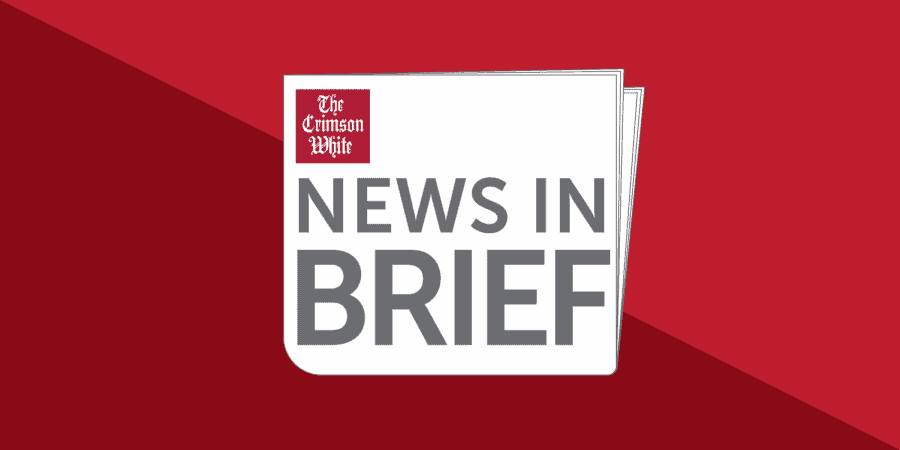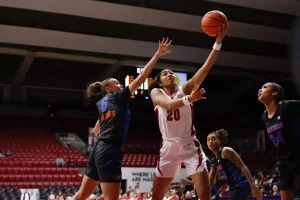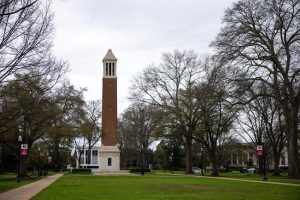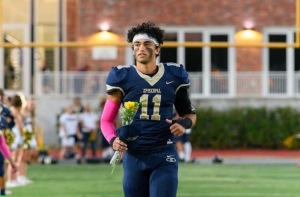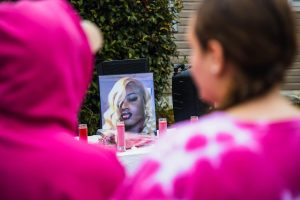October marks Breast Cancer Awareness Month
October 24, 2019
While Breast Cancer Awareness Month is coming to an end, there are things everyone can do year-round to stay safe.
Oct. 1 marked the beginning of Breast Cancer Awareness Month.
Breast cancer is caused by the overgrowth of malignant cells in the breast. According to the National Breast Cancer Foundation, the disease will affect over 200,000 people this year, with an estimated 268,600 new cases of invasive breast cancer being diagnosed in women and 62,930 cases of non-invasive breast cancer being diagnosed.
While breast cancer is most notably diagnosed in women, men are also susceptible to the disease. The National Breast Cancer Foundation finds that the breast cancer lifetime risk for men in the U.S is about 1 in 1,000.
Cancer Awareness on Campus
There are a variety of ways to get involved with breast cancer awareness on campus. Many local clubs and businesses donate a portion of their profits to breast cancer organizations, one of them being a fruity favorite, Blenz Bowls.
Blenz Bowls is featuring a “pink bowl” throughout the month of October, donating 25% of its proceeds from pink bowl sales to the National Breast Cancer Foundation.
“I think the pink bowls are a great way to make both your stomach and heart happy,” said Emma Givens, a UA sophomore majoring in nursing. .
Another local organization participating in breast cancer awareness is the Zeta Tau Alpha (ZTA) sorority, which hosted its annual Barbecue for Breast Cancer this month, raising $70,062. the Zeta Tau Alpha Foundation, which partners with the American Cancer Society.
“It is incredibly rewarding to be able to give so much to this cause through this event alone and gets us that much more excited for our future philanthropy events to come,” said Brogen Witucki, ZTA Director of Philanthropy.
ZTA’s national philanthropy is breast cancer education and awareness, with chapters across the nation participating in a variety of philanthropic events such as survivor-recognition activities and Pink Out games on campus to pink lemonade stands and golf tournaments.
The Student Fashion Association also hosted the “Bad and BOOujee” fashion show, which benefited the Susan Love Foundation. The event, which was held on the Hub Rooftop, featured looks inspired by Halloween festivities.
“Everyone has some ties to breast cancer in some way, and since October is Breast Cancer Awareness Month, we decided to donate a percentage of the profits to the Susan Love Foundation for Breast Cancer research,” said Nikki Maccariello, president of the Student Fashion Association.
Path to Prevention
While many may only check for breast cancer during the month of October, breast cancer affects individuals year-long. With over 3.5 million breast cancer survivors in the U.S., early detection is key to recovery.
The National Breast Cancer Foundation lists the following as early signs of breast cancer:
- “Skin changes, such as swelling, redness, or other visible differences in one or both breasts
- An increase in size or change in shape of the breast(s)
- Changes in the appearance of one or both nipples
- Nipple discharge other than breast milk
- General pain in/on any part of the breast
- Lumps or nodes felt on or inside of the breast.”
There are additional things individuals can do to be safe. The easiest and most convenient way to check for breast cancer is a self-breast exam. BreastCancer.org has a five-step process for breast exams:
“Step 1: Begin by looking at your breasts in the mirror with your shoulders straight and your arms on your hips.
Here’s what you should look for:
- Breasts that are their usual size, shape, and color
- Breasts that are evenly shaped without visible distortion or swelling
If you see any of the following changes, bring them to your doctor’s attention:
- Dimpling, puckering or bulging of the skin
- A nipple that has changed position or an inverted nipple (pushed inward instead of sticking out)
- Redness, soreness, rash, or swelling
Step 2: Now, raise your arms and look for the same changes.
Step 3: While you’re at the mirror, look for any signs of fluid coming out of one or both nipples (this could be a watery, milky, or yellow fluid or blood).
Step 4: Next, feel your breasts while lying down, using your right hand to feel your left breast and then your left hand to feel your right breast. Use a firm, smooth touch with the first few finger pads of your hand, keeping the fingers flat and together. Use a circular motion, about the size of a quarter.
Cover the entire breast from top to bottom, side to side – from your collarbone to the top of your abdomen, and from your armpit to your cleavage.
Follow a pattern to be sure that you cover the whole breast. You can begin at the nipple, moving in larger and larger circles until you reach the outer edge of the breast. You can also move your fingers up and down vertically, in rows, as if you were mowing a lawn. This up-and-down approach seems to work best for most people.
Be sure to feel all the tissue from the front to the back of your breasts: for the skin and tissue just beneath, use light pressure; use medium pressure for tissue in the middle of your breasts; use firm pressure for the deep tissue in the back. When you’ve reached the deep tissue, you should be able to feel down to your ribcage.
Step 5: Finally, feel your breasts while you are standing or sitting. Many individuals find that the easiest way to feel their breasts is when their skin is wet and slippery, so they like to do this step in the shower. Cover your entire breast, using the same hand movements described in step 4.
Additionally, regular screenings can detect early signs of breast cancer not found in self-exams.
According to Cancer.org, there are a variety of tests available to diagnose breast cancer including mammograms, ultrasounds, MRIs, as well as new and experimental breast imaging tests.”
To learn more about breast cancer, visit https://www.nationalbreastcancer.org/.



